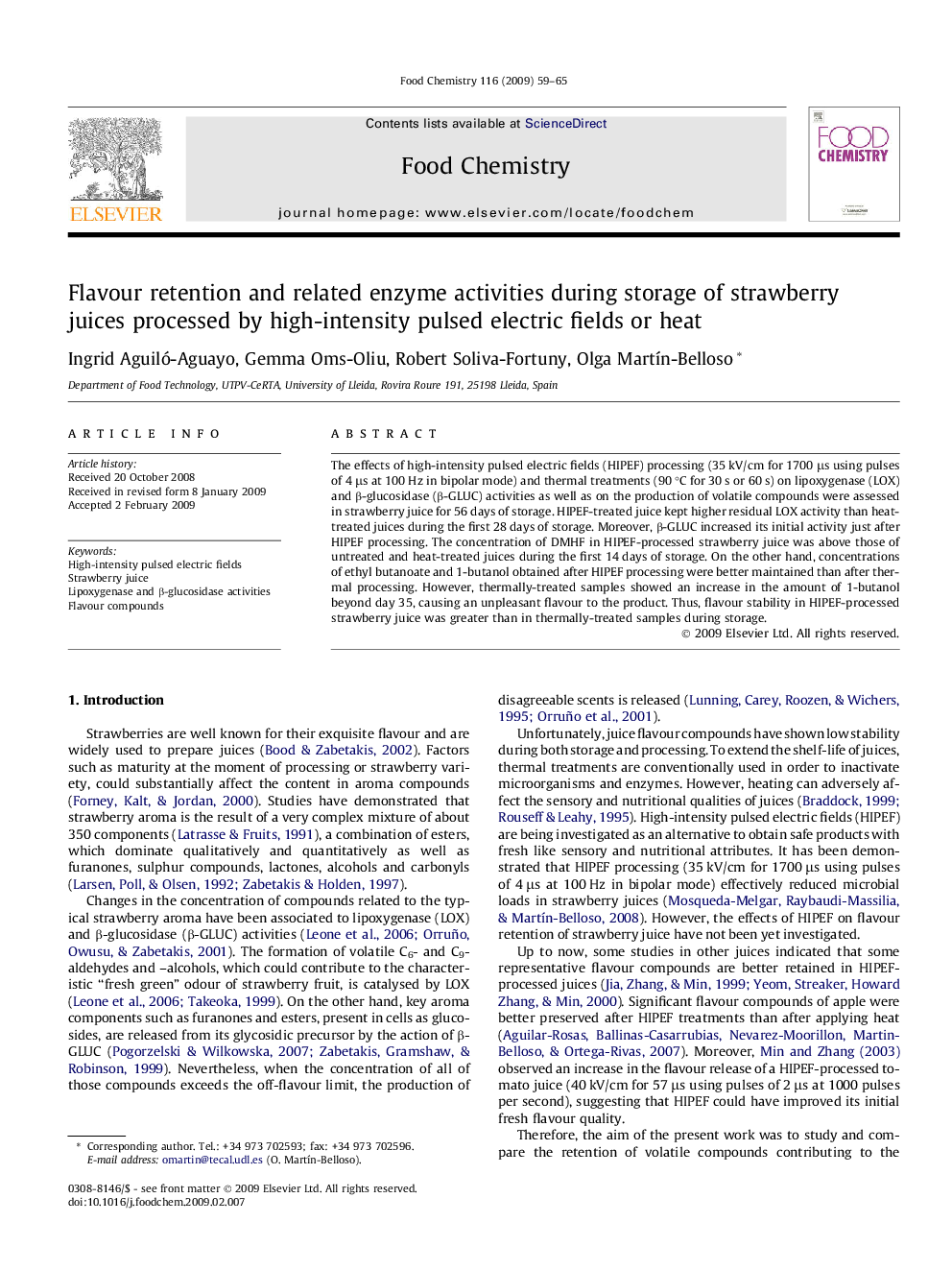| Article ID | Journal | Published Year | Pages | File Type |
|---|---|---|---|---|
| 1186093 | Food Chemistry | 2009 | 7 Pages |
The effects of high-intensity pulsed electric fields (HIPEF) processing (35 kV/cm for 1700 μs using pulses of 4 μs at 100 Hz in bipolar mode) and thermal treatments (90 °C for 30 s or 60 s) on lipoxygenase (LOX) and β-glucosidase (β-GLUC) activities as well as on the production of volatile compounds were assessed in strawberry juice for 56 days of storage. HIPEF-treated juice kept higher residual LOX activity than heat-treated juices during the first 28 days of storage. Moreover, β-GLUC increased its initial activity just after HIPEF processing. The concentration of DMHF in HIPEF-processed strawberry juice was above those of untreated and heat-treated juices during the first 14 days of storage. On the other hand, concentrations of ethyl butanoate and 1-butanol obtained after HIPEF processing were better maintained than after thermal processing. However, thermally-treated samples showed an increase in the amount of 1-butanol beyond day 35, causing an unpleasant flavour to the product. Thus, flavour stability in HIPEF-processed strawberry juice was greater than in thermally-treated samples during storage.
